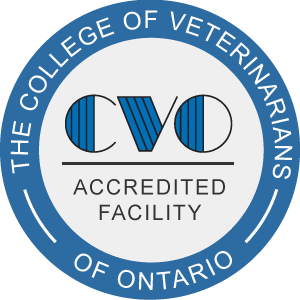Illustrated Articles
-
The Staffordshire Bull Terrier loves his family with a passion, especially the juvenile members - this breed's devotion to children is legendary.
-
What makes the Standard Schnauzer so compelling? Maybe it is the distinctive beard and mustache supporting the long muzzle that captures our attention, or those eyes that seem to be scrutinizing with an insatiable curiosity and perhaps even skepticism.
-
Staph (or staphylococcal) dermatitis is an inflammatory skin condition that the skin caused by a group of bacteria called Staphylococcus. Any disorder that causes itching or a change in the skin’s environment can create the ideal conditions to allow Staphylococcus to become a problem. This handout discusses Staphylococcus dermatitis in dogs, as well as a hypersensitivity (allergic) reaction to this bacteria. The clinical signs of these conditions, along with diagnosis, treatment, and prognosis, are outlined.
-
Stem cells are unspecialized cells that are capable of renewing themselves though cell division. Under certain conditions, they can become a specific tissue or organ cell. Stem cell therapy commonly refers to the process of placing stem cells from the body into diseased or damaged tissues, such as a torn ligament in the knee or perhaps an arthritic joint. This process is often referred to as regenerative medicine. Adult stem cells are capable of repair and regeneration of various tissues because they have the potential to differentiate into specialized cells of an organ. The most common use of stem cell therapies has been in the treatment of osteoarthritis in dogs and cats. Currently, there are no current guidelines with respect to stem cell therapy. Stem therapy should only be performed by a veterinarian with special training, who understands the benefits and limits of this therapy. It is important to have realistic expectations as positive outcomes cannot be guaranteed.
-
This handout discusses the use of corticosteroid (such as prednisone or dexamethasone) in the dog. Reasons for use as well as the common short-term and long-term side effects of these drugs are outlined, along with strategies to avoid these effects.
-
Stomach tumors are uncommon in dogs and cats. There are many kinds, including leiomyosarcomas, lymphomas, adenocarcinomas, mast cell tumors, fibrosarcomas, plasmacytomas, gastrointestinal stromal tumors (GISTs), and carcinoids (all malignant); and leiomyomas, adenomatous polyps, and adenomas (benign). Most tumors are malignant. Stomach tumors are more prevalent in older animals, males, and certain breeds. The signs of stomach tumors include chronic vomiting, inappetence, lethargy, and weight loss. Sometimes tumor ulceration will cause anemia. Paraneoplastic syndromes are possible with the muscle tumors. Stomach tumors may be diagnosed with imaging, endoscopy, or surgery, with a biopsy. Treatment may involve surgery, chemotherapy, or radiation therapy.
-
Administering supplemental fluids can benefit dogs with a variety of medical conditions. Giving injections is outside the comfort zone for almost anyone outside the medical profession; however, subcutaneous fluid administration is not nearly as difficult as it sounds. Your veterinary healthcare team will provide you with all the equipment that you will need to administer fluids to your dog. They will go through the steps with you in person. Do not use the fluid bag if cloudiness or discoloration develops in the fluids.
-
Sudden acquired retinal degeneration syndrome (SARDS) causes blindness in older dogs, most often females. The underlying cause of SARDS is unknown and there is no effective treatment for the condition. This handout explains the clinical signs observed in affected dogs, how the condition is diagnosed, and how to support a dog with SARDS.
-
Home care after surgery mainly involves the restriction of physical activity. Excessive physical activity often leads to injury or serious complications. Monitor the incision daily for signs of redness, swelling, discharge, or excessive licking, and never apply anything to the incision unless instructed to do so. To keep your dog from licking, your veterinarian can provide you with a protective collar or recovery suit. Your dog should gradually improve each day.
-
The main objectives of fracture repair are to promote rapid healing of the fracture and to get the dog using its leg as quickly as possible. In most cases, this involves rebuilding the broken bone and fixing it in that position with metallic implants. Post-operative care includes pain medications, antibiotics, adequate nutrition, exercise restriction, and physiotherapy. Most fractures can be repaired very effectively and in many cases, your dog will resume normal activity.


